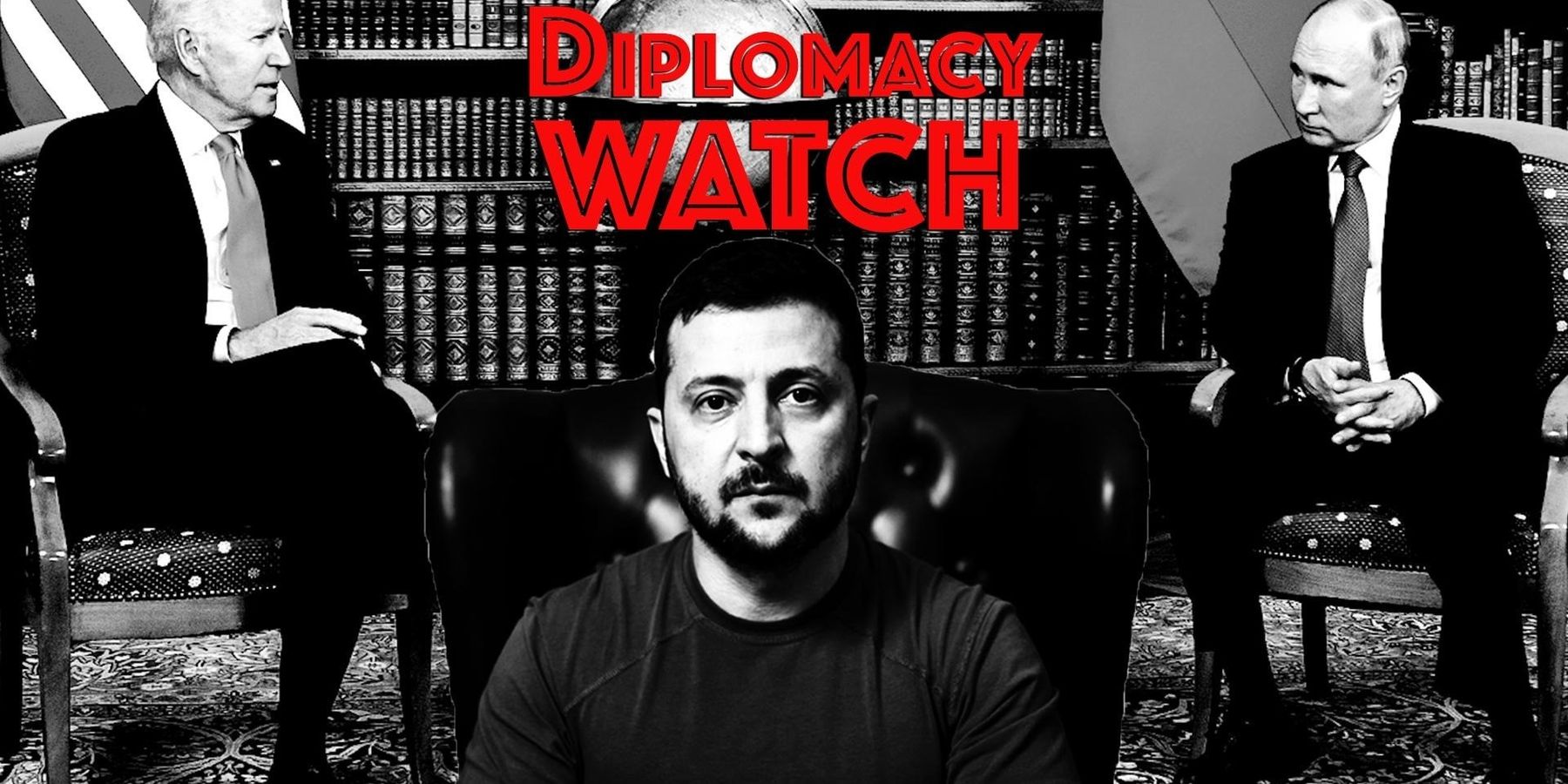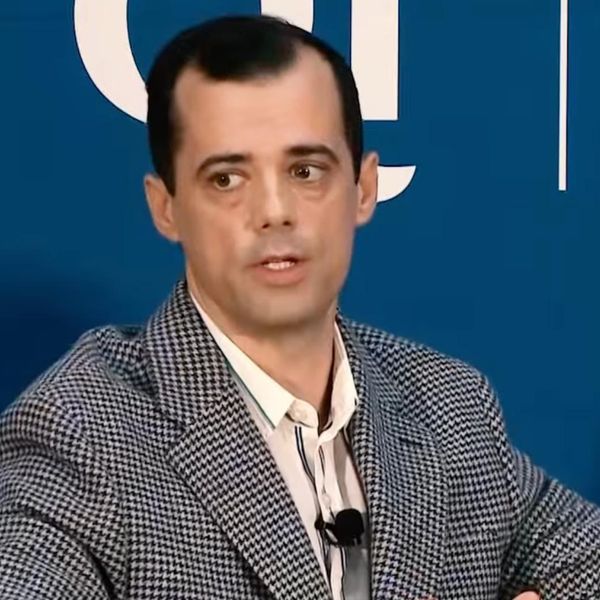This week a German prosecutor quietly issued an arrest warrant for a man authorities say was part of a small team of private Ukrainian patriots who blew up the Nord Stream pipelines on September 26, 2022.
The arrest, according to initial reports this week, appeared to suggest that the major act of sabotage, which shut down Nord Stream 1 and ended any prospects for Nord Stream 2 from ever going online, was carried out by a bunch of rogue actors and not connected to the Ukraine government or military.
Reporting by the Wall Street Journal on Thursday suggests otherwise: that the saboteurs may have been private actors, some of them professional divers, who carried out the elaborate blasts along the pipelines, but they were assisted by top officers in the Ukrainian military.
Ukrainian President Volodymyr Zelensky initially approved the plan, according to one officer who participated and three people familiar with it. But later, when the CIA learned of it and asked the Ukrainian president to pull the plug, he ordered a halt, those people said.
Zelensky’s commander in chief, Valeriy Zaluzhniy, who was leading the effort, nonetheless forged ahead. …
The Journal spoke to four senior Ukrainian defense and security officials who either participated in or had direct knowledge of the plot. All of them said the pipelines were a legitimate target in Ukraine’s war of defense against Russia.
Portions of their account were corroborated by a nearly two-year German police investigation into the attack, which has obtained evidence including email, mobile and satellite phones communications, as well as fingerprints and DNA samples from the alleged sabotage team. The Germany inquiry hasn’t directly linked President Zelensky to the clandestine operation.
The Wall Street Journal called it “one of the most audacious acts of sabotage in modern history, the operation worsened an energy crisis in Europe — an assault on critical infrastructure that could be considered an act of war under international law.” Yet the officers called it a legitimate target in Ukraine’s war of defense against Russia.
But was it? The countries of Denmark, Germany, Finland and Sweden might disagree. The pipelines traverse their economic zones in the Baltic Sea. All are NATO members (Finland and Sweden were officially brought in a year after the blasts), and all had been impacted, as had the European community in general, by the longterm loss of energy supplies due to the attack. The pipelines were majority owned (51 percent) by Russian Gazprom, along with German, Dutch and French stakeholders. EU countries were getting 35% of their natural gas supplies from Nord Stream 1 which was shut down a few months before the blast due to the Russian invasion of Ukraine.
As QI’s Director of the Eurasia program Anatol Lieven said last year, the sabotage “made German and other European countries even more permanently dependent on imports of liquified natural gas from the United States.”
Interestingly, there is no one accusing Russia of blowing up its own pipelines anymore as mounting evidence suggests that Ukraine was behind it (though Ukrainian officials, including Zaluzhniy, vehemently deny any government or military connection as stated in the WSJ report).
Reporter Sy Hersh’s account is still out there, too. Through his own reporting in February 2023 he claims a specialized and secret U.S. Navy diving team, with White House clearance, conducted the sabotage. He said a cover story was later concocted in “collaboration with German intelligence that would provide the American and German press with an alternative version for the destruction of Nord Stream 2.”
U.S. fingerprints, at least in all of the mainstream reporting, including the German investigation, are nowhere near the Nord Stream plot, except for leaks of intelligence that indicate Washington was aware of a plan afoot and not only warned European partners but told Ukrainian officials to call it off.
It would seem, however, that the story is not yet at an end. According to the WSJ, “the German investigation is now focusing on Zaluzhniy and his aides, people familiar with the probe say, although they have no evidence that could be presented in court.”
In other Diplomacy Watch headlines this week:
News of Ukraine’s military incursion into the Russian oblast of Kursk has dominated the news. According to the Associated Press and other outlets, the Ukrainians have pushed some 20 miles into Russian territory since Aug. 6, have supposedly captured 74 towns and villages, taken over 100 Russian prisoners and spurred evacuations of tens of thousands of residents in the affected areas, according to Al Jazeera.
Reports of fighting have continued but so far Ukrainian forces have not gotten to the Kursk nuclear power plant, around which the Russians have built elaborate trench defenses, according to the Kyiv Independent. Russia claims to have stabilized the border, while Ukrainian officials say they are pushing further into the oblast.
Why have Ukrainians taken this path? The Foreign Ministry in Kyiv insists it doesn't want to hold ground but create a “buffer zone” to prevent long-range missile attacks from Russia.
The West has been largely surprised by the incursion, according to this Associated Press report, though it was clear from the onset that Ukraine was rolling in with Western (U.S.) tanks and artillery, according to the Washington Post.
Experts who weighed in a RS symposium Thursday say this was a great PR win for Ukraine as it appeared to take Russia by surprise but they were by were skeptical that Kyiv had the resources and manpower to hold any of the areas before Russia decided to double down. Prospects for negotiations also seem farther away as a result.
"The Ukrainian incursion into Russia is a sideshow intended to bolster Ukrainian morale and give the West confidence to keep backing Kyiv, but it will not affect the outcome of the war," said Yale professor Stephen Walt. "(It) may be a minor embarrassment for Putin (as well as additional evidence that Russia is far too weak to invade the rest of Europe), but Ukraine’s fate will be determined by what happens in Ukraine, and not by this operation."
At the Thursday State Department press briefing, when asked about U.S. weapons being used in the cross border attacks, something that was once a red line for the White House due to its escalatory nature, spokesman Vedant Patel said Ukraine has the full backing of Washington.
PATEL: I think we’ve danced around this issue this whole week... Again, the only reason that you and I are even having this exchange is because Russia is a country that in February of 2022 attempted to subjugate Ukraine’s borders illegally and in total violation of the UN Charter. And so our responsibility as the United States is to continue to stand with our Ukrainian partners. That’s what we’ll do. As it relates to some of these specific activities, the U.S. has not been engaged or involved in any of the planning or preparation for that, but we continue to have a responsibility and will stand with our Ukrainian partners as they defend themselves.
QUESTION: So is the U.S. okay with it if Ukraine does use U.S. weapons in this incursion?
PATEL: Our policy has not changed.
- Symposium: What does Ukraine's incursion into Russia really mean? ›
- Nord Stream revelations should chasten Ukraine dam ‘hot takes’ ›
- One year later, why is the Nord Stream attack still a mystery? ›
- Nord Stream explosions linked to Ukraine military but no one cares | Responsible Statecraft ›
















